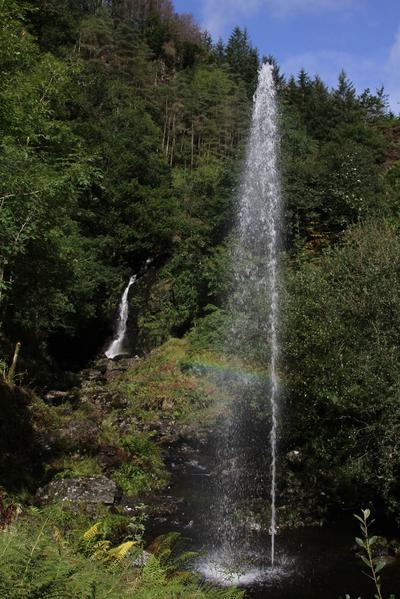The Lochend Stone: The Doon Hill Stone
- Sculpture
- Socially Engaged Practice
- Heritage & Archives
- Participatory & Collaborative
- Environment & Sustainability
- Social & Political
- Public Art
- Scotland
- Stone Carving
- Outdoor Sculpture
Dimensions
120cm x 90cm x 60cm
This carved stone is one of the seven ‘Lochend Stones’. It can be found to the south of Lochend Woods, Dunbar on Brodie Road. The carved panel on one side shows two figures carrying flaming torches overlooking a house ahead. On the upper surface of the stone is a three-dimensional carving of the same building. The stone references a large Neolithic hall which once stood two miles away to the south on the shoulder of Doon Hill. This grand timber structure was built around 6000 years ago by the first people to begin farming in the area and living in settled communities rather than as hunter-gatherers.
Previous excavations revealed that the hall was built on top of a previous building with evidence of the first structure being burned. These halls were initially thought to date to around 500-600 AD, however recent radio-carbon dating has shown that both were from the Neolithic period around 6000 years ago. Nothing remains of the buildings today but their outlines have been marked out in concrete in the grass.
Doon Hill can be seen on the horizon to the south from the point of view of the stone. Exactly half way to the hill in the same direction is the Easter Broomhouse standing stone, a red sandstone monolith that is around 2.5m tall and may date to a similar period as the Neolithic timber halls on Doon Hill.
The Lochend Stones are seven carved stone artworks by artist James Winnett that form a trail through Lochend Woods in Dunbar. The stones appear as curious ruins with each stone carrying a carving that draws on an historical event that has taken place nearby.
The land on which the stones reside was once part of the Barony of Lochend, a large estate that surrounded Lochend House. Part of the ruins of the original 17th century house can still be seen in the woods. This house was replaced by a 19th century mansion that was destroyed by fire in 1859 and of which there is no trace today. When researching the history of the area James was struck by the stark contrast between the peaceful nature of the woodland today and the often tumultuous events that have played out across the surrounding landscape – with two battles, a five month siege and disastrous fires all playing out in this same corner of East Lothian.
The project title draws on a motto that until relatively recently could be found carved into a stone lying next to the ruins of the 17th century Lochend House. A survey from 1962 describes it as follows:
“On a panel lying beside the gateway is carved an heraldic achievement. Beneath a heavy crest and mantling is a shield charged with nine stars (the Baillie arms) and below is the legend SEDES DENT FATA QUIETAS ('May) the fates give a quiet seat') and the initials 1 B.”
There is no sign of the inscription today, suggesting it has been lost over time or perhaps removed in a similar fashion to the impressive arched gateway which was re-erected at Leithen Lodge, Innerleithen in 1992.
The project explores the idea of hoping for a 'quiet seat', both in terms of 'a seat of power' but also as a quiet place to sit and take in the sites, sounds and scents of the surrounding woodland. Several of the stones function as seats, and although their carved panels speak of the area's turbulent history, they encourage the passer-by to sit and look out onto the world of the present.
The limestone blocks were sourced from Dunbar Quarry which lies just two miles away to the east. By gradually polishing the surface of the stones intricate details of fossil corals from over 320 million years ago were revealed, foregrounding a sense of deep time. Like the carvings these fossils have their own story to tell – one of warm, crystal-clear tropical seas when the land we now call Scotland was located to the south of the equator. Known as 'Dunbar Marble' this particular type of limestone was once quarried for use in decorative fireplaces.
The designs for the artworks were developed through a research and community engagement programme involving several stone carving workshops that took place in the woods. Workshops were also held at Dunbar Primary and Belhaven Hill Schools.
The project was developed in conjunction with Dunbar Community Woodland Group who manage the woods. It was funded by Persimmon Homes through East Lothian Council’s Percent for Art scheme. The stones were donated by Tarmac from Dunbar Cement Plant.
Helping Artists Keep Going
Axis is an artist-led charity supporting contemporary visual artists with resources, connection, and visibility.






